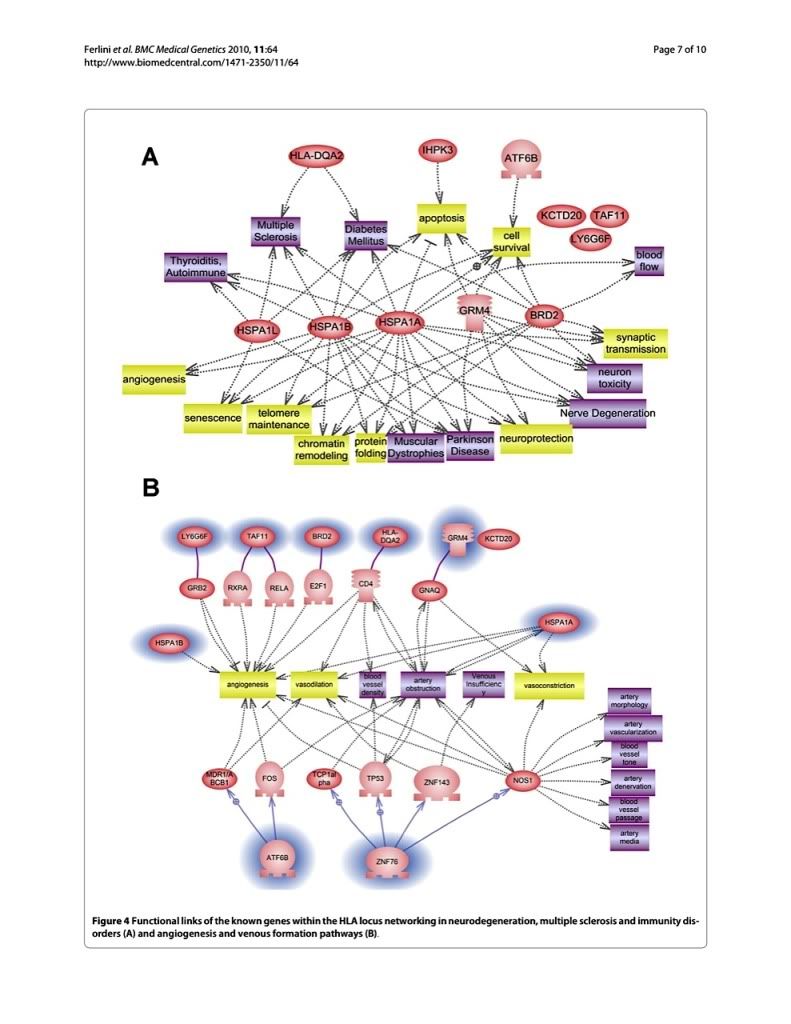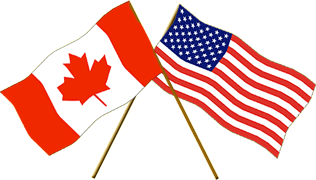Caveat time. I heard Dr. Ferlini speak about this study in Bologna in '09, and it was the most confused I have ever been in my life. More confused than calculus class....here are my notes from her presentation. I just wrote what she said, and tried to decifer it at the hotel later. Dr. Ferlini was looking at the loci already associated with MS. She found much crossover into venous malformation and CCSVI. I agree, she deserves a Nobel...she's still studying CCSVI genetics and families, and has more publications to come.
Dr. Alessandra Ferlini- geneticist at Universite deglie Studi di Ferrara
SNPs are single nucleotide polymorphisms- and they reveal a multi-loci susceptibility to MS. The 4 specific loci are MS1, MS3, MS4, MS2. These are the chromosomes most linked to MS
Genetics is still questioned in this research, since there are undefined environmental factors.
Genome inflation- a characteristic of SNPs may hamper the true definition of identified genetic loci by SNP association. More studies are needed.
Interactome- the interaction of phonemics, genomics, preteomic, metabolic studies- all together-
This is done in genomic studies using CGH array rather than SNPs
The Ferrara study looked at CNVs (copy number variations) of chromosome 6p21.32 (HLA locus) in CCSVI patients.
CGH verified the occurrence of CNVs in the major locus of MS patients.
15 unrelated CCSVI patients were tested. No relation between the topography of CNVs and phenotype were shown....
but there was a significant relation between the number of extragenic CNVs and the phenotype correlated with venous malformations.
HSPAIL, HSPIA, HSPIB (heat shock proteins) were related to angiogenesis and immunity. HLADLAZ and CD4 are involved in proinflammatory disease and tumor angiogensis. There are multiple gene disorders, and environment has a large influence.
The genome imbalance may be sensitive to environmental factors.
There was a significant correlation between the number of CNVs and the number of venous malformations. The number of polymorphic CNVs in the HLA region linked to MS does correlate with the number of venous malformations in MS patients.
This is a new way to study genetic disorders- to look for mutations on more than one genome. It is a very complex system, and cannot be narrowed to one genome.
Dr. Frohman asks if this has been tested in families? Are there genes affected in relatives with other autoimmune diseases?
Dr. Ferlini answers that this is a pilot study, and it is the first time looking at this paradigm. Future testing will look at families.
Dr. Lee comments that we have much genetic data on lymphatic malformation, yet no studies on the genetics of venous malformation. The veno-lymphatic systems need to be brought together. They have been separated and we need more venous information.
Dr. Ferlini comments that a similar phenotype can involve many genes, it depends on how they interact in the pathway. We need to locate many genes and understand how they interrelate, when they switch on and off, and how they interact in polygenetic disorders.
The basic takeaway I got from this lecture, and Dr. Ferlini's published paper, was that these genes known to be related to MS, affect the immune system and venous malformations. They are not just involved in one system.
As far as the colors on the diagram, I think it's about location of the boxes, not just color. Yellow is normal function, purple center is immune/neurodegenerative/vascular disease, red are the genes.
Those purple boxes on the right hand side are normal vascular function. Different than the purple center boxes, which are disease related. I think....
I got the full Compston paper...and honestly, I can't find any new stuff. It looks like the same old MS HLA loci, but I'll dig in later and see what's in there. I really wish SOMEONE in the press had picked up on Ferlini's research before using Compston's quote that his genetic research proves CCSVI is bunk. I can't believe the press people don't do any further research, and just take his pronouncement as fact. ugh.
cheer


